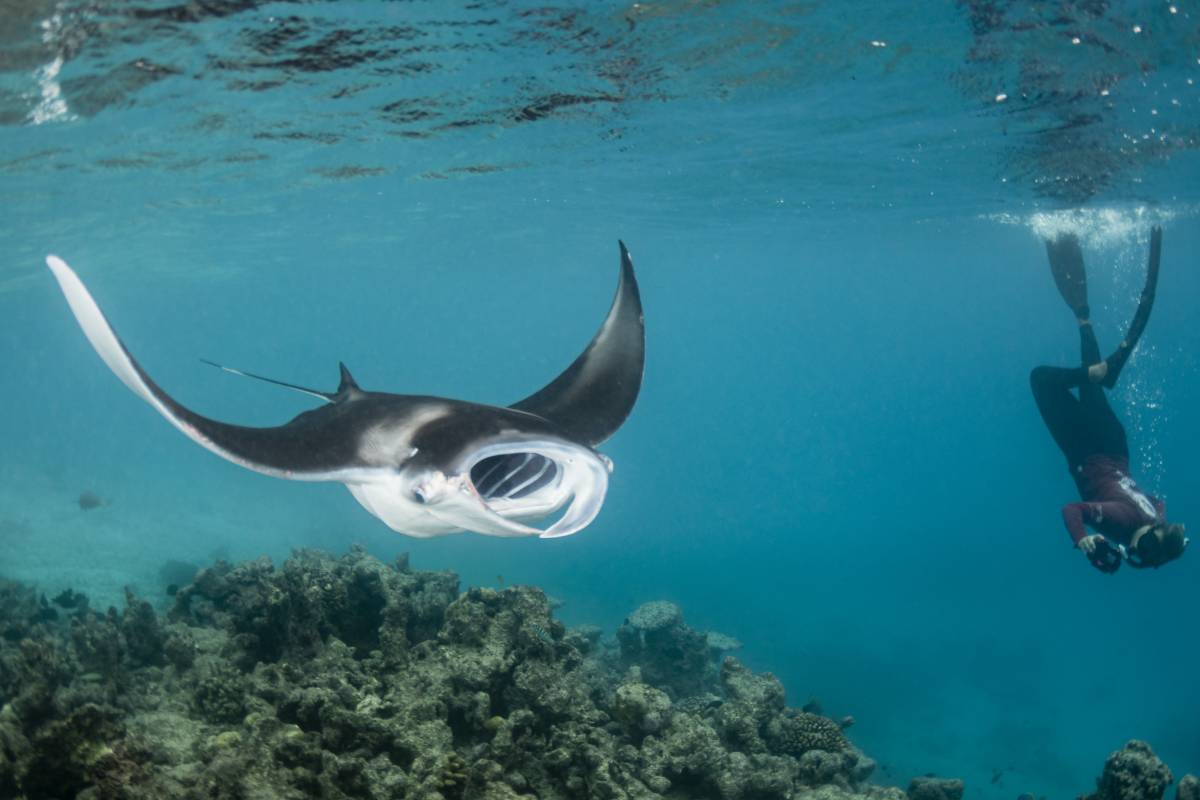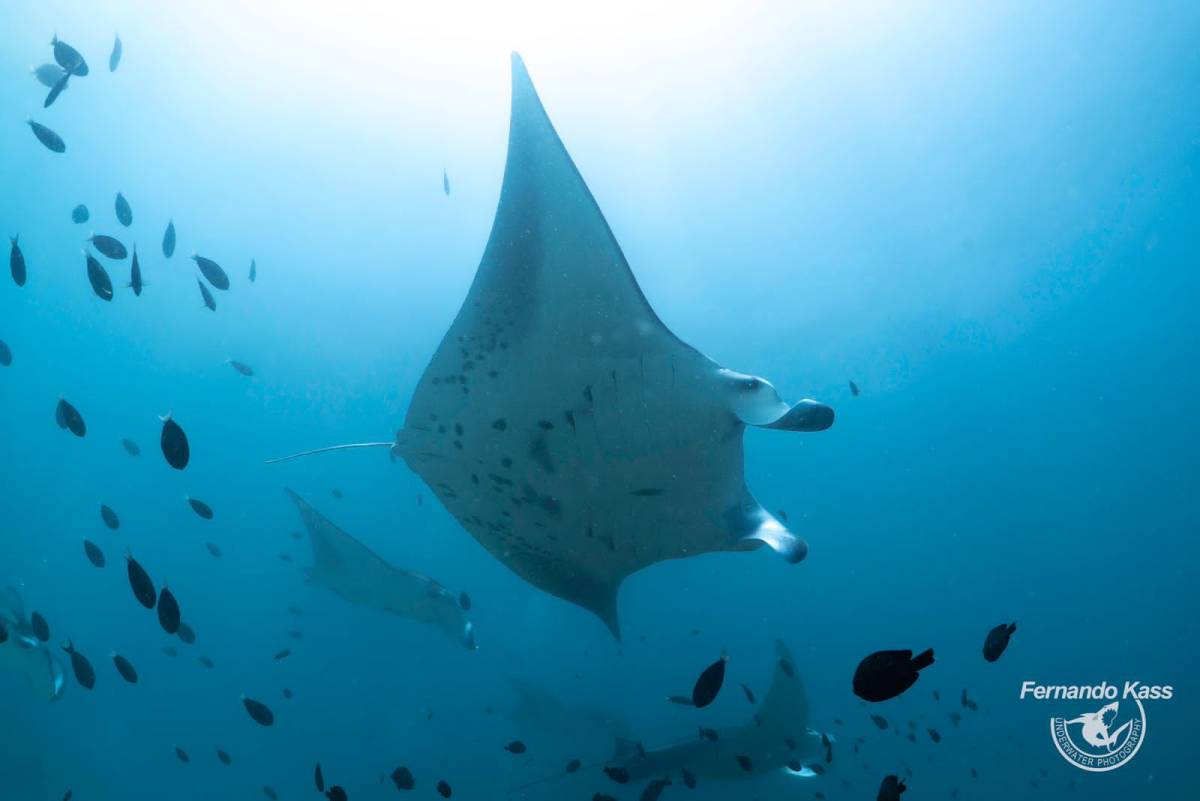Manta Trust Creating Sustainable Tourism For Man And Manta
Research, Education And Collaboration
Jess taking ID photo - Charlie Cupples Photo
When Irene Millar had a conversation with Jessica Haines, Project Manager at Manta Trust, Maldives, she learned a great deal about the gentle giants of the sea
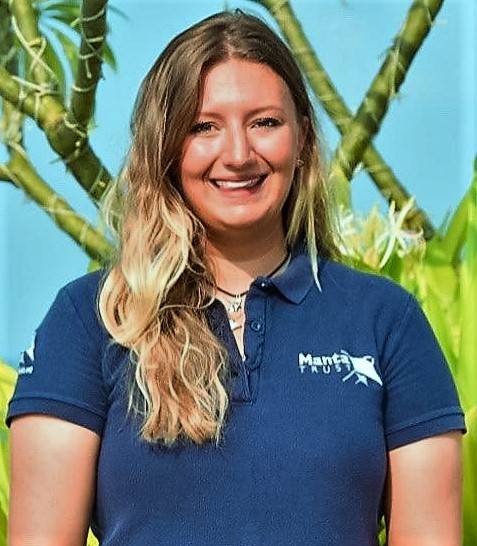
Attending a virtual conference earlier this year I had the pleasure of chatting with Coetzer Deysel and Ramesha Samarasinghe from InterContinental Maldives Maamunagau Resort. During our conversation about their many sustainability initiatives, their partnership with Manta Trust piqued my curiosity. I haven’t, as yet, been fortunate enough to see a manta ray, so I was fascinated to discover more about these gentle giants of the sea from Jessica Haines, Project Manager for Manta Trust in the Maldives (pictured above).
Jess is originally from Oxfordshire, England and grew up in the countryside surrounded by wildlife. Her rural countryside upbringing is very different to her life now in some of the world’s most exotic locations. Her love of the ocean and marine life started at eight years old on a family holiday to the Maldives. Learning to scuba in shallow waters she was entranced by the fish and dolphins and decided then to become a marine biologist. This aspiration materialized through the completion of a degree in Zoology at The University of Exeter and braving the icy depths of the Cornish waters in winter to complete her Dive Master certification. Since then, Jess has enjoyed warmer climates as a marine volunteer, dive instructor, and undertaking research projects, in Sri Lanka, Bahamas, Cayman Islands and Central Caribbean before moving to the Maldives four years ago.
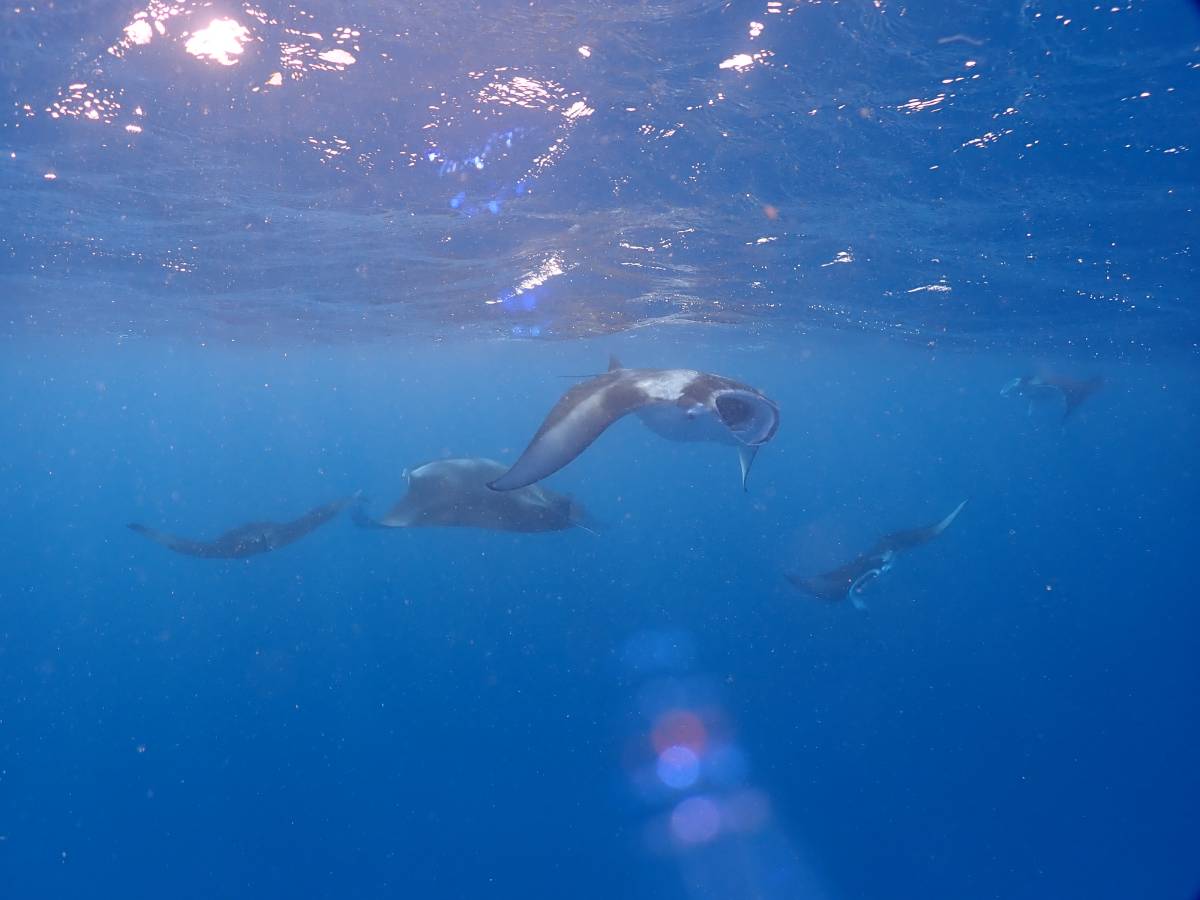
Feeding mantas in Maamunagau - Jessica Haines Photo
Jess recalls feeling awed by the size of a manta ray on her first sighting and she describes them as huge graceful creatures who are inspiring to watch underwater. When born, a pup’s wingspan is around one and a half meters wide. Reef manta rays grow up to four meters in width during their lifespan of approximately 40 years.
Mantas can be found in tropical and subtropical oceans around the world. Globally mantas face threats as bycatch from fisheries and from targeted fishing for the gill plate trade for use in Traditional Chinese Medicine. In a study to compare the economic value of mantas, killing one manta for its gills generates $500, whereas over a 40-year lifespan, one live manta generates $1 million from sustainable tourism revenue.
Warming sea temperatures pose a threat to mantas as they depend on coral reefs which act as cleaning and feeding sites. Cleaning stations are full of small fish which remove any parasites and help clean any injuries. Feeding sites are areas with a plentiful supply of zooplankton. Mantas eat a specific variety of zooplankton which is very sensitive to changes in water temperature, any increase in temperature may result in reduced food availability.
Over a four-year period, Jess has observed loss of coral reefs in the Maldives as a result of increasing sea temperatures leading to coral bleaching. Manta Trust are collecting data on climate change by mapping manta cleaning stations and zooplankton levels.
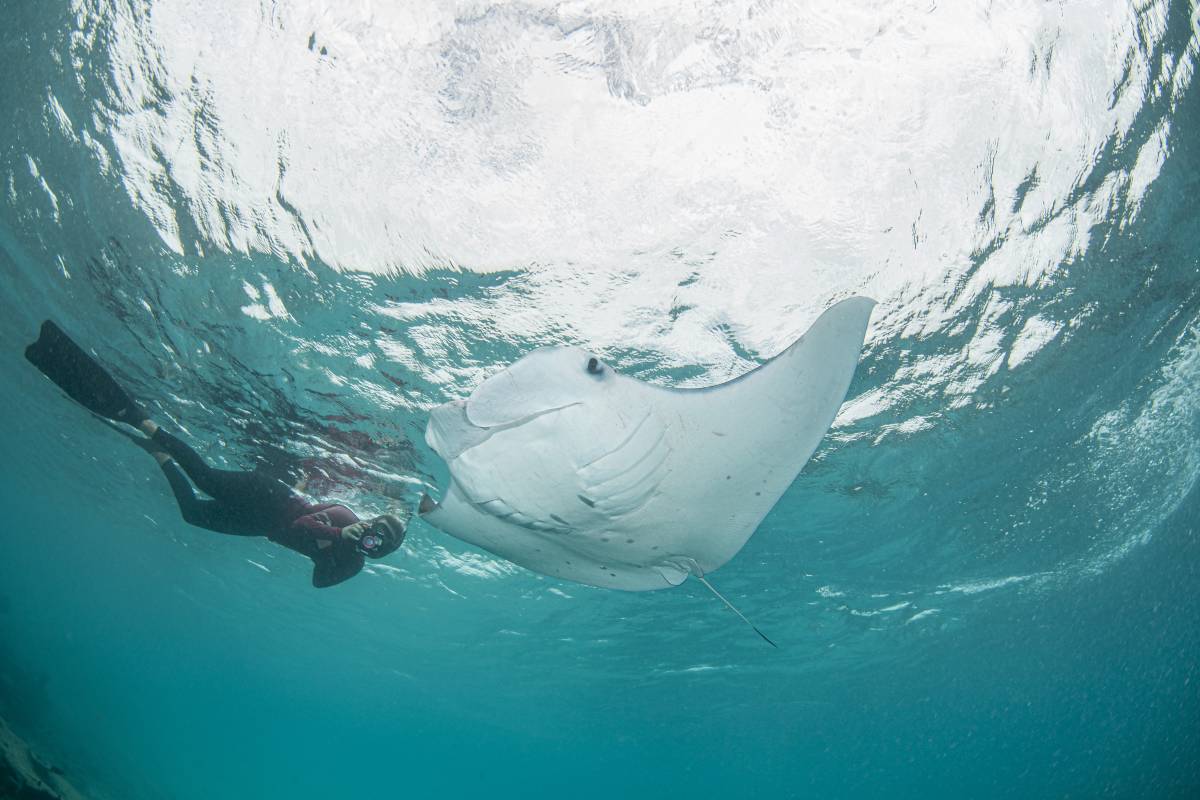
Jess and Manta - Charlie Cupples Photo
The manta population is less threatened in the Maldives due to strong government protection against bycatch and targeted fishing. The main threats faced by mantas in the Maldives are from natural predators (sharks), propeller wounds from boats, and entanglement in ghost gear (abandoned fishing lines). Mantas have an exceptional ability to heal and wounds from propellers and fishing lines will heal over time, providing their central organs remain intact and they can continue to breath.
Jess explained to me that the Maldives island nation is unique and is currently home to the largest population of reef manta rays in the world. InterContinental Maldives Maamunagau Resort, where Jess is based, offers something special, it has a large lagoon surrounding it, and this creates a large plankton trap which provides a safe habitat for manta rays to feed and clean during the months December to April.
The thriving population here makes it an ideal location for researchers to learn about the life cycle of mantas. This research is used to help support the global population which is not as well protected from bycatch and targeted fishing, and in some places faces local extinction.
Mantas are naturally curious, however they are not able to stop swimming or swim backwards, so all research conducted is non-invasive. It is done at a distance, without touching the mantas or causing any distress. Technology such as photogrammetry which collects measurement data allowing researchers to measure growth rates, contactless ultrasound to view internal organs and detect pregnancies, and camera systems which record for several days at a time are all useful tools to improve the data available to researchers. A new study Jess is conducting is to use drones to monitor boat traffic, this study will hopefully help to mitigate speed limits within manta ray feeding areas and ensure safe distances from the mantas are maintained.
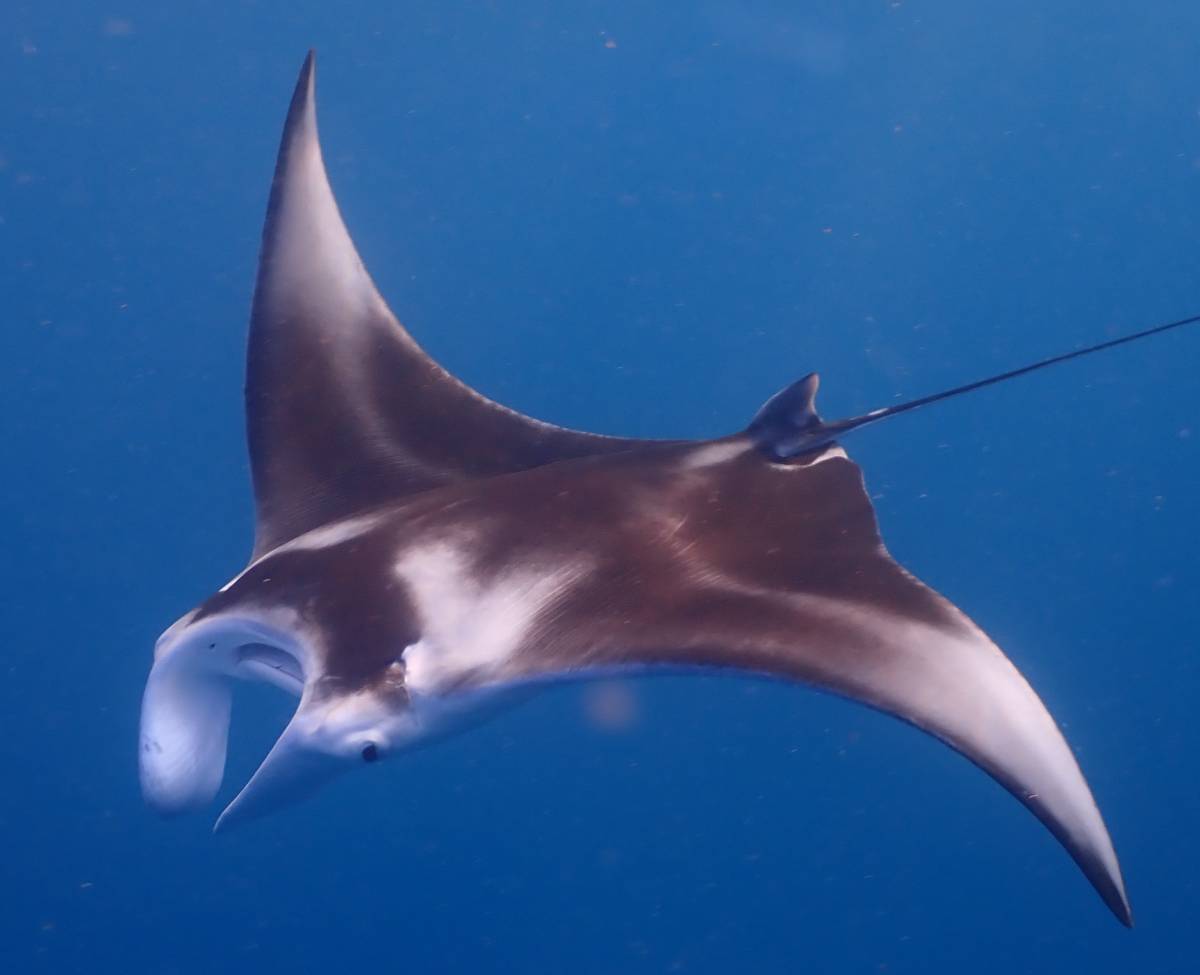
Manta Pup Kokko in Maamunagau- Jessica Haines Photo
Individual mantas can be identified by the pattern of belly spots which is equivalent to the human fingerprint, each one is unique. Identification of individual mantas is an important aspect of research work and all sightings are entered into a database. From belly spot identification researchers have been able to track the migration pattern of the mantas.
A manta giving birth in the wild has not yet been observed, however the current theory is that females give birth in large lagoon systems, similar to Maamunagau Lagoon, as this provides a safe habitat sheltered from sharks. Safety from predators is an important consideration as there is no maternal care after the pups are born. The data collected so far from Maamunagau Lagoon shows a large number juvenile manta rays and new born pups utilising the area. Jess is currently conducting research to assess if the lagoon around InterContinental Maldives Maamunagau Resort is indeed a nursery habitat for reef manta rays. This would be the first nursery habitat officially identified in the Maldives, and one of only four known juvenile habitats in the world.
Collaboration is one of the key pillars of Manta Trust. They have a robust relationship with the Maldives Government which helps to maintain the strong government protections that mantas here enjoy. Manta Trust provides the government with annual reports, based on research data, on the manta population and any threats being faced to support the implementation of more protection areas and measures.
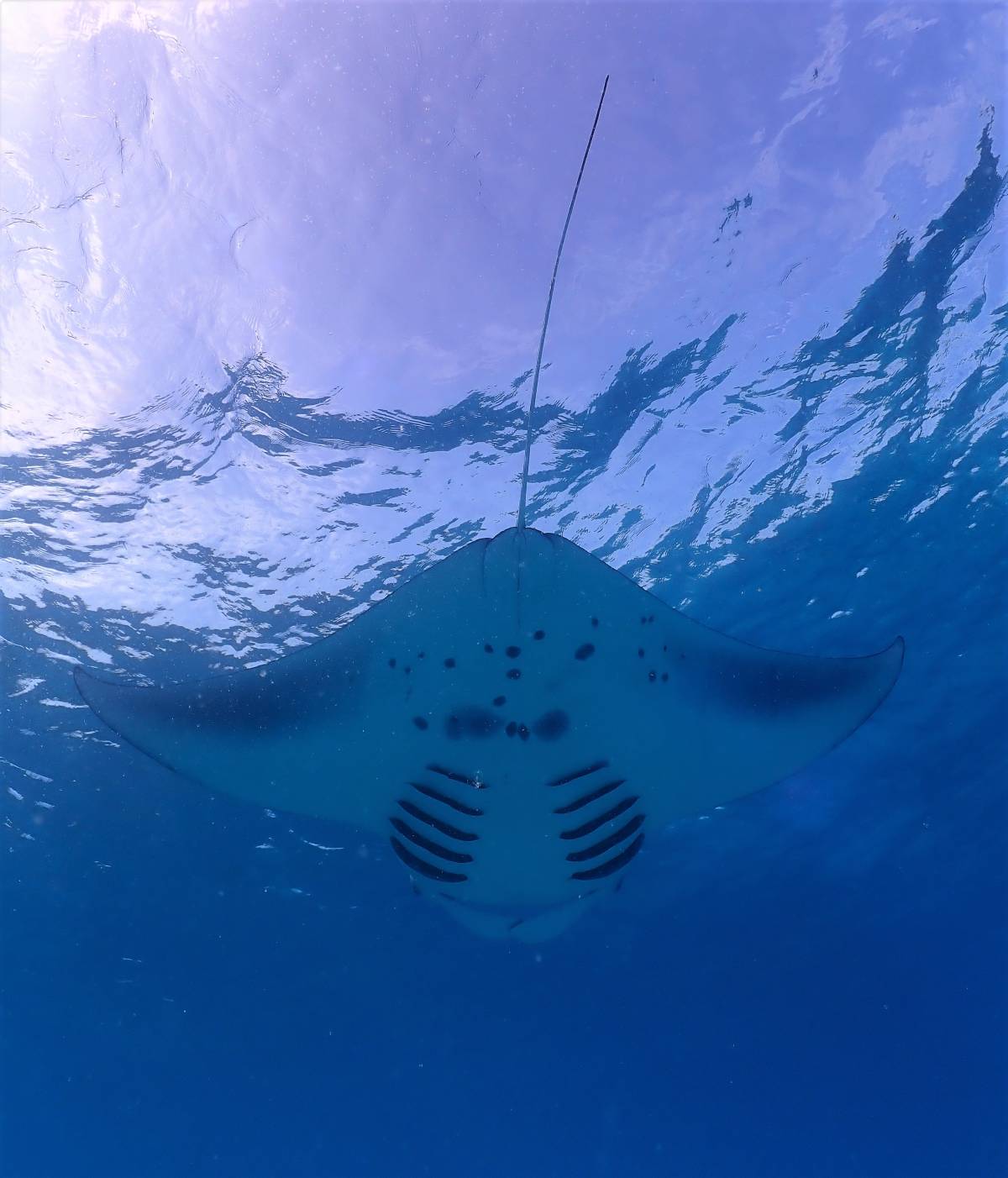 Juvenile manta Tianchou - Jessica Haines Photos
Juvenile manta Tianchou - Jessica Haines Photos
InterContinental Maldives Maamunagau Resort partnered with Manta Trust when they opened the resort in 2019. Jess attributes their support for the volume of data on mantas she has been able to collect, and to hopefully be recognised officially as being surrounded by a juvenile nursery.
The opportunity to join all guests’ manta excursions, along with on-island presentations, helps Jess spread awareness and education of mantas through guest engagement, and this helps InterContinental guests enjoy a more rounded manta experience.
I knew very little about mantas prior to my conversation with Jess and learned a great deal from her. She tells me that manta tourism is becoming increasingly popular. Any manta tour you join should be accompanied by a guide who provides you with a briefing which includes information about mantas, the threats they face, what you will observe during your trip and the Code of Conduct to ensure that you do not impact on the manta’s natural behaviour. Mantas enjoy human interaction, however they will stop feeding if interrupted, so it’s important that you understand and comply with instructions given.
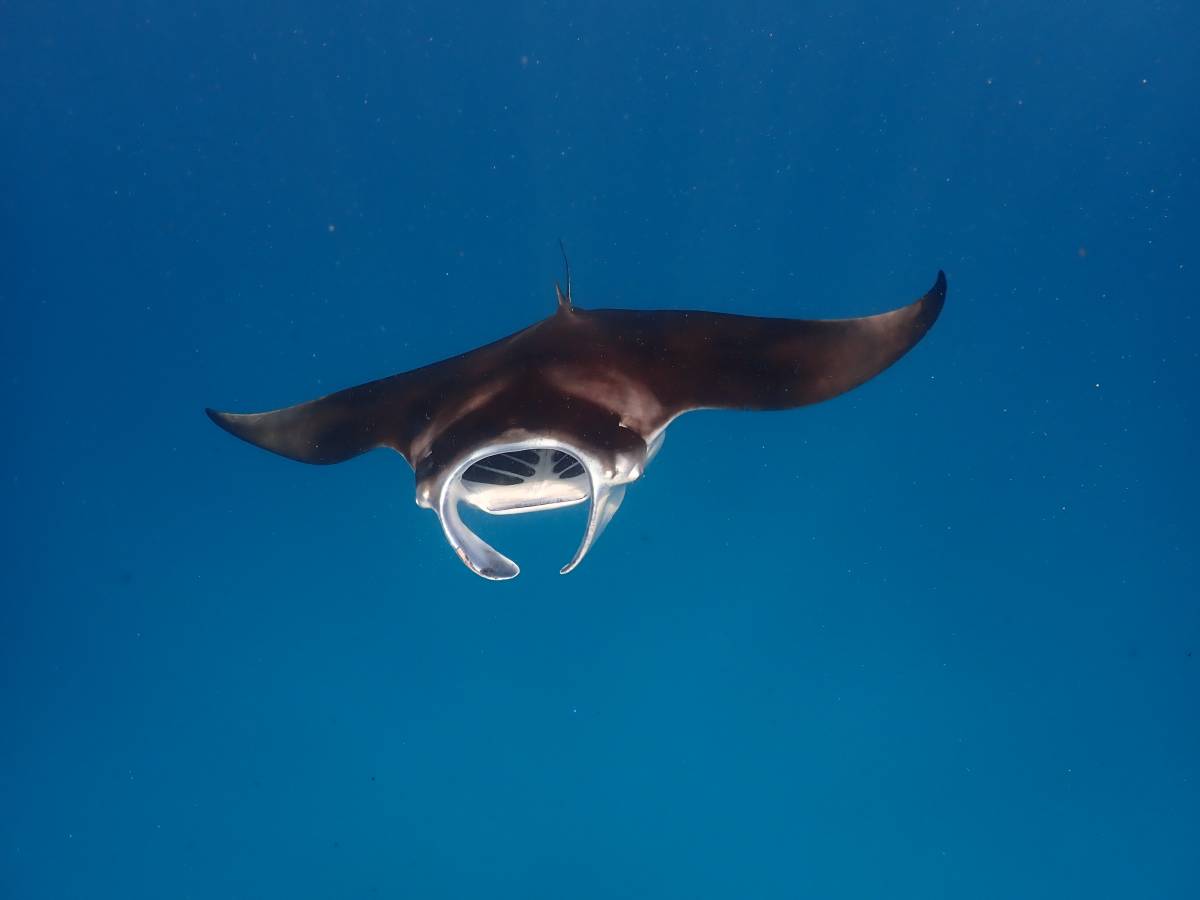
Juvenile manta feeding - Jessica Haines Photo
The research and education programmes that Manta Trust provide aren’t possible without support from the government, partners such as InterContinental Maldives Maamunagau Resort, and the public. Adopting a manta ray through the Manta Trust is a great way to support their work and learn more about these enigmatic creatures.
Contact Details
Learn more about Manta Trust on their informative and engaging website: https://www.mantatrust.org/
Book your stay at Intercontinental and experience mantas for yourself: https://maldives.intercontinental.com/
Maamunagau Island Raa Atoll, Republic of Maldives
Phone: 1-888-424-6835
Resort Phone Number: +960-658-0500
reservations.icmaldives@ihg.com
WhatsApp (available 24/7): +960 730 9300
IRENE MILLAR

Passionate about sustainability, Irene would like to hear stories from people in the travel industry with knowledge, dedication and insight, on how they make a positive difference to their local communities, habitats and environment through applying sustainability principles and practices.
irenemillar@zohomail.com


